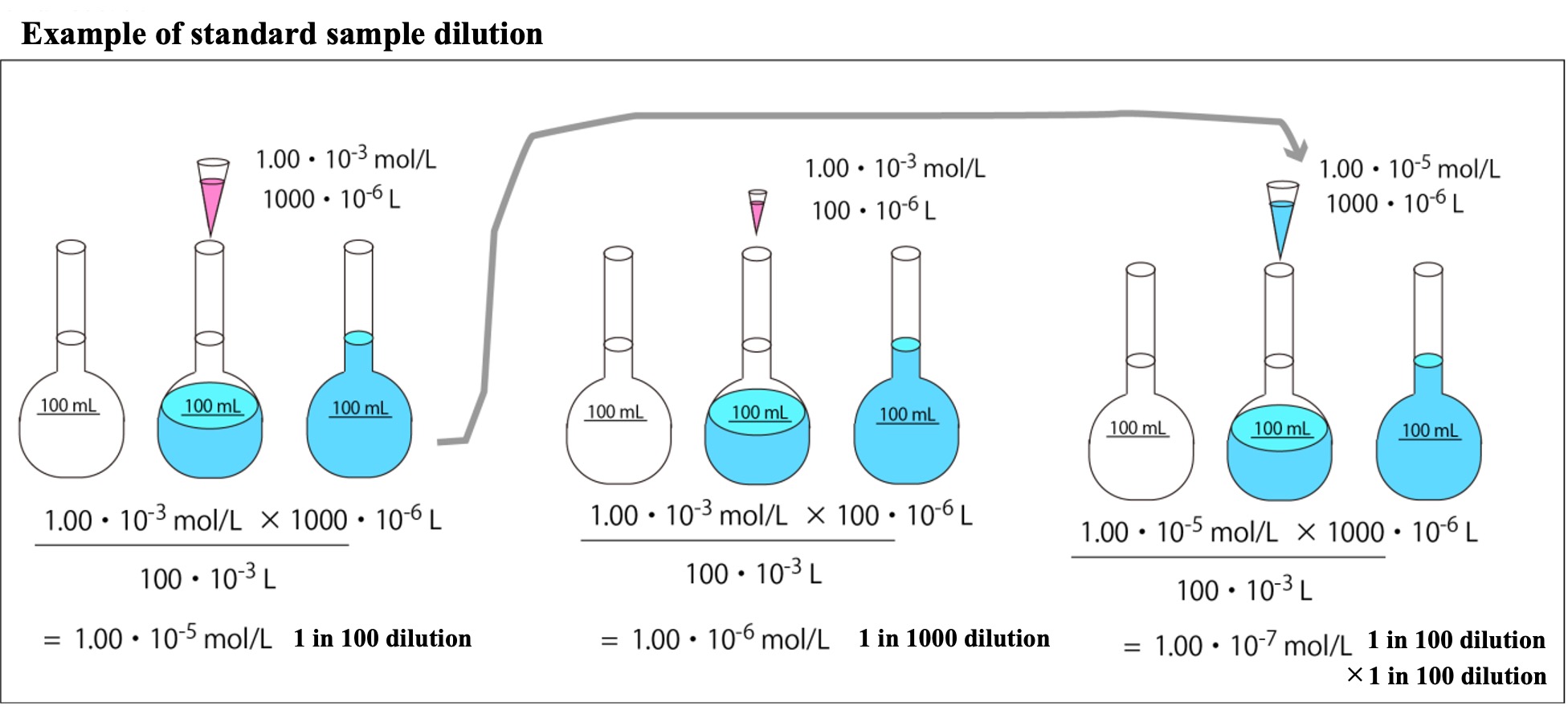Concentration measurement - Calibration curve -
There are not many handy devices that allow you to feed an environmental sample into an analyzer and automatically finish the measurement and output a concentration value. Or, such devices are not very reliable*. So, how do you convert measurement results into concentration? The most common method is the intensity method using calibration curves.
* If the performance of the instrument changes little over time, a calibration curve can be created in advance and stored in the instrument. Then, the concentration value can be automatically output from the signal intensity.
Intensity method
Prepare several standard samples of known concentration (see figure below), measure them, and obtain the signal intensity. A calibration curve is created by plotting the concentration of the standard samples on the vertical axis and the signal intensity on the horizontal axis. The signal intensity obtained from the measurement of the unknown sample is then converted to concentration by substituting it into the regression equation of the calibration curve.

(Calculation methods and exercises will be covered in the next course.)
Reference book:Introduction to Environmental Analytical Chemistry for the Future (Edited by OGUMA Koichi et al., Kodansha Scientific)